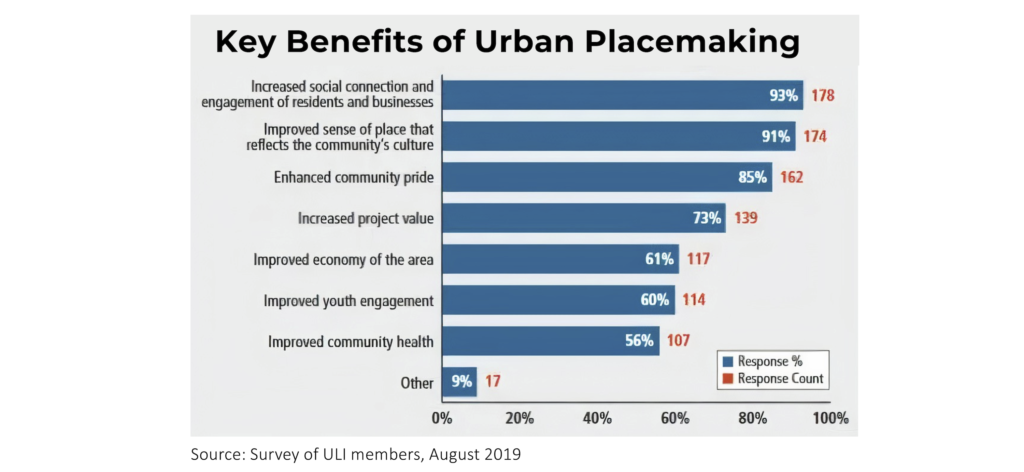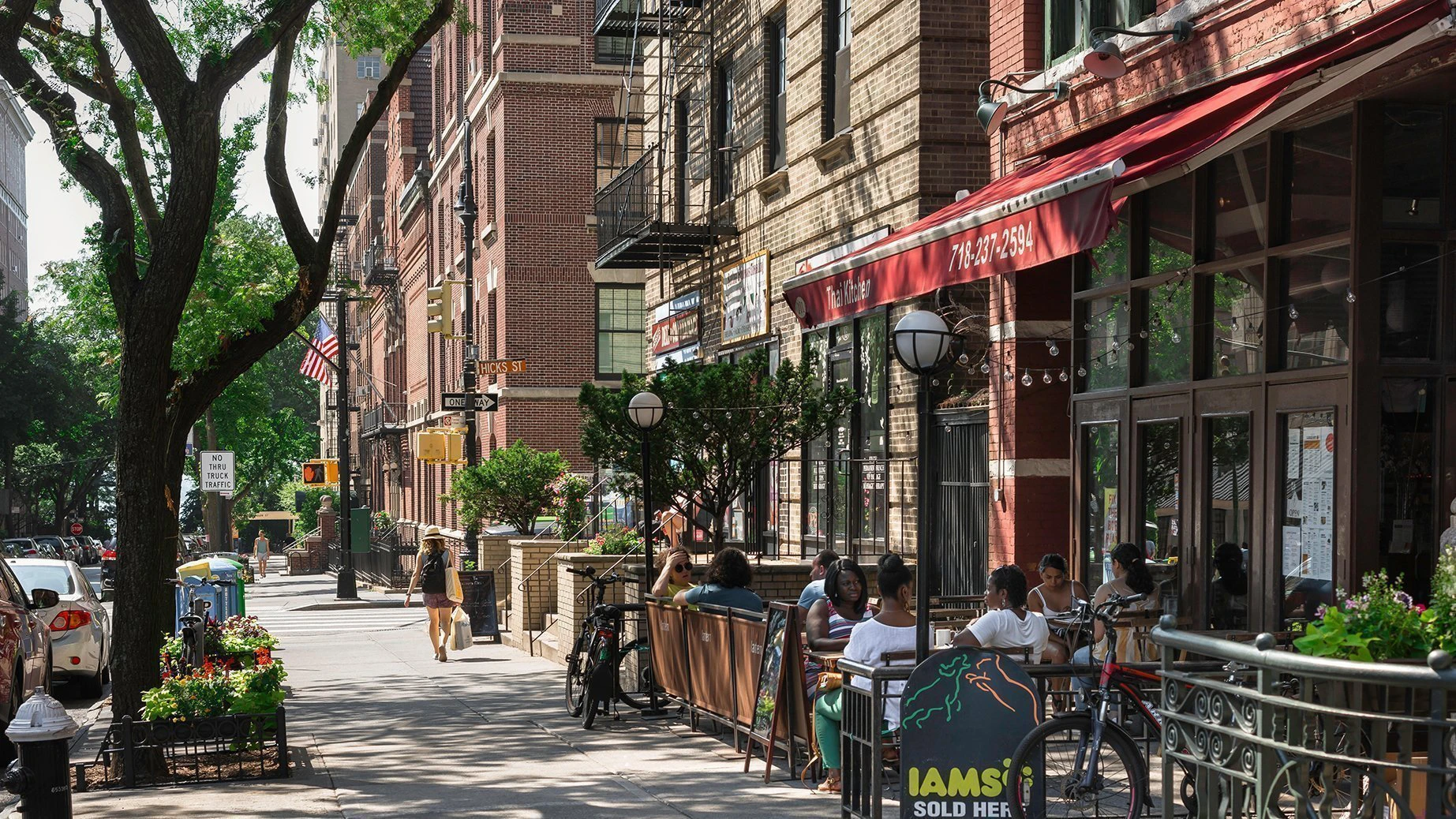The Power of Place: Boosting Urban Real Estate Value By Creating a Destination
What’s Essential to Create Real Estate Value in Urban Centers?
Why does one neighborhood, one place change the value of everything around it in the urban built world? Understanding what draws people together gives us some insights into the success of some urban neighborhoods that had been ignored, were not a destination, and essentially provided no reason to go there. What fixes this is a key mix of seemingly unrelated things that build on each other.
All the Right Ingredients to Attract People
The strategies behind this are all centered on placemaking, the process of conceiving and creating spaces and environments that are attractive, functional, and meaningful to the people who live, work and play in them. In urban locations, placemaking is critical to creating real estate value because it helps to attract and retain residents, businesses, and visitors by enhancing the overall livability and desirability of the area.
No matter where you are, it’s about attracting people to places, and creating reasons to be there.
One example of placemaking in an urban location is the revitalization of Times Square in New York City. In the 1980s and 1990s, Times Square had a seedy reputation and high crime rates. However, a concerted effort was made to improve the public spaces, increase safety, and attract businesses and visitors. This included the installation of new sidewalks, lighting, and public art, as well as the creation of new parks and plazas.
As a result, Times Square has become one of the most popular tourist destinations in the world, and surrounding real estate values have soared.
Tips for making an urban center a “destination”
1. A Focus on Safety, Walkability, and Experiences
The key to creating successful and thriving locations is a mix of specific functional aspects of the place, including safety and walkability. Ease of access and nearby transit also help. It’s got to be a human-scaled walking environment. Then, the demographics of people experiencing the space is critical.

Placemaking grows real estate value in urban locations because it helps to create livable, functional, walkable places that attract people and more investors who decide to build there.
The pioneers in some cases, are young people, but the key is to connect with women. If they feel safe, others come, and you’ll see a mix of older folks and families. It becomes a signal to everyone that this is a place to be. One way women feel safe is when people are actually out there using the space. They feel safe if there are more eyes on the street, and it gets safer over time as more people come. This could also mean creating well-lit paths for evening walks, installing benches at regular intervals so people can sit and rest, or putting in bike lanes to encourage alternative modes of transportation. In addition to ensuring safety, placemaking also helps create more social connections among community members. When parks, squares, or other public spaces are designed with the intention of bringing people together, they often serve as a catalyst for new relationships and friendships.
Last but not least, a vibrant mix of unique retail experiences matters. People need to eat, connect, and shop somewhere! Experiences because you can’t buy them online, and it’s here where placemaking can play an important role. By creating attractive public spaces with diverse amenities, placemaking can help attract a variety of businesses that create “experiences” for their customers — from local mom-and-pop shops to larger retail chains. This not only adds value to the community but also helps create a sense of place and identity. When a place is known for its unique retail offerings, it becomes an attraction in itself, drawing in more visitors and potential customers.
2. Value Builds on Itself and Attracts More
Another example is the transformation of the South Lake Union neighborhood in Seattle (just east of the Space Needle). This area was once primarily an industrial district, but it has been transformed into a thriving mixed-use neighborhood with new residential, office, and retail.
This was accomplished by creating new parks, public spaces, and infrastructure improvements, as well as developing new buildings and streetscapes, followed by developers who took initial risks on building new housing and bringing in new retailers. As a result, the area has become one of the most desirable places to live and work in Seattle, and real estate values have risen accordingly.
Placemaking is an important tool for creating real estate value in urban locations, starting with a vision for creating livable, functional, and attractive spaces that people want to experience, and building the reality through various strategies, including public space improvements, infrastructure upgrades, and appropriate mixes of uses.
The transformation of urban spaces isn’t just about the bricks and mortar — It’s about the heart and soul of a community, the experiences crafted, and the strategic blending of functional and attractive spaces. As we’ve seen from Times Square, to downtown Berkeley (we have had the honor to help build strategies for), to South Lake Union, when done right, placemaking isn’t just a tool – it’s the secret sauce to boosting real estate value and community pride.
So, the next time you’re walking through an urban space that feels just right, know that there’s a carefully crafted strategy at work, making that magic happen. Want to unlock the potential of your urban space? The Radiant team specializes in crafting placemaking strategies to elevate real estate values and community appeal.
